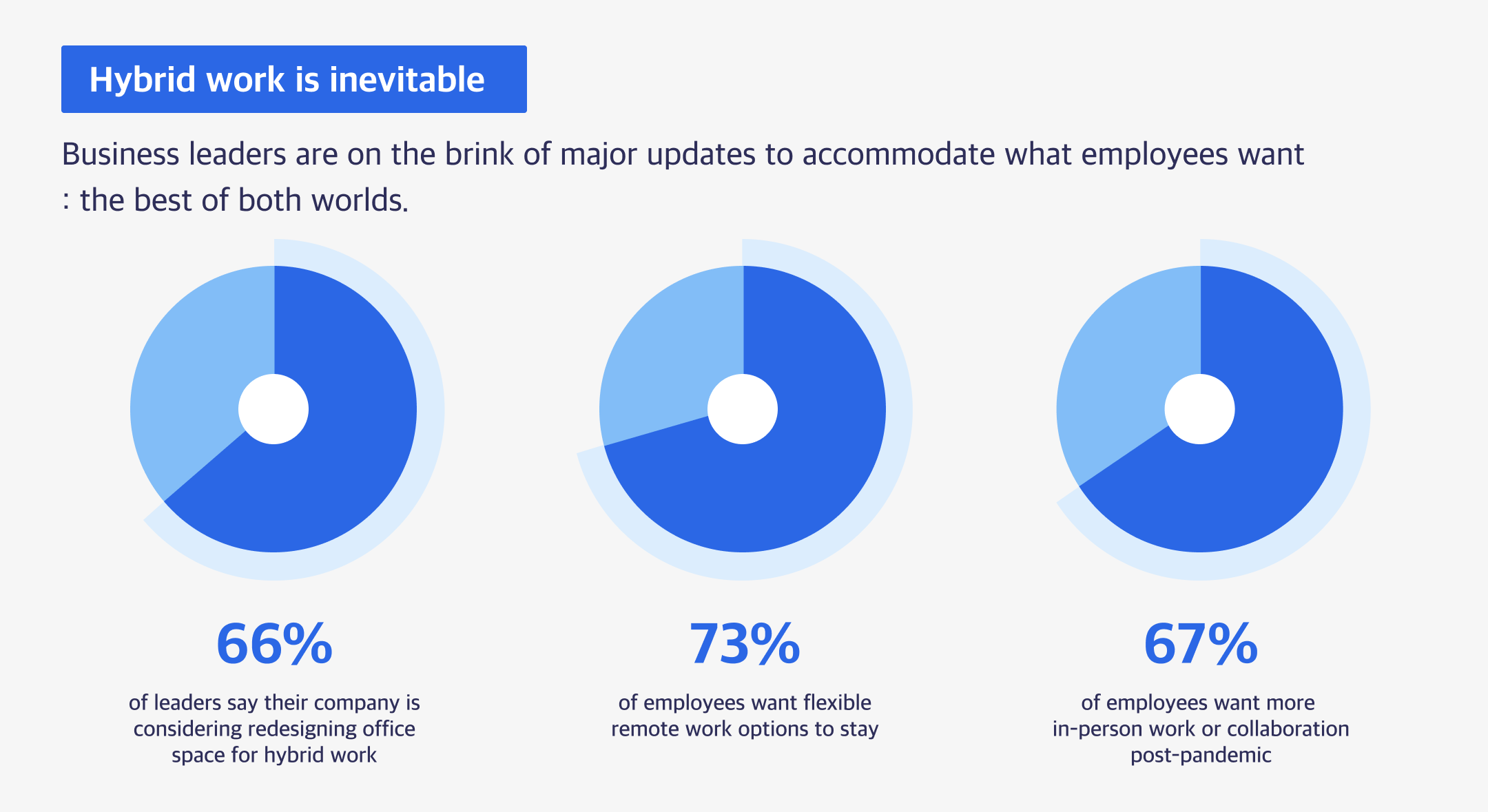The State of Remote Work in 2021
2022-11-13

It’s 2022 already. The COVID-19 pandemic has been around us for almost over two years. Since the outbreak of COVID-19, many businesses had a chance to transition their traditional work arrangements to work remotely. Moreover, hybrid and remote work have become the norm nowadays and are expected to remain so even after the pandemic.
Then what would be the popular work model in 2022? What will be the next work model after COVID‐19 is over? Let’s take a look back in the past two years and see how we have worked to deal with this situation.
Increase in Remote Work
• Before COVID-19
Remote work is not a new concept. Even before the pandemic, there was a low percentage of people working from home. According to the 2019 NCS from the federal Bureau of Labor Statistics, it was estimated that only 7% of workers in the United Staes had access to remote work prior to COVID-19 as it was common for most employees to be on-site location every day.
• During COVID-19
After the strike of COVID-19, remote work became more widely available and commonly used. A majority of workers have worked remotely from 2020, rating 80% in some occupations. According to a report from Gallup, on average from October 2020 to April 2021, at least eight in 10 workers have been working remotely.
And Now
As the pandemic continued to evolve throughout almost two years, so did the way we work. As we enter a new era of work, employees now expect flexibility in not only where they work, but also when they work. As the research from Owl Labs shows that nearly 48% said that if they were no longer able to work remotely, they would start looking for another job offering more flexibility. In the U.S., 81% of those that worked from home during the pandemic said they want a hybrid or remote work even when the pandemic is over.
These latest figures above confirm the established tendency of an increased remote and hybrid work in the near future.
Common Misconceptions about Remote Work
Before the pandemic, many employers had misconceptions about remote and hybrid working situations. Most widespread opinions were related to trust concerning issues with this sudden transition to remote work. It’s difficult to let go of traditional ways of operating, especially if employers believe that employees require direct supervision to be more productive.
A research conducted by Ricoh Europe reveals that just 35% of employers trust their staff fully while working remotely, with 39% suggesting their people don’t work as hard or effectively as in the office. Yet, despite their concerns and trust issues, just 19% of employers answered that productivity decreased since they transitioned into remote working.
David Mills, CEO of Ricoh Europe, stated, “Having an office-based workforce is important to the success of our business, as it is for most across the continent. The office will never go away. The challenge for business leaders is to remain mindful that remote and hybrid working are two different things. It stands to reason that less commuting, a greater sense of flexibility, and having the trust of your manager are significant contributing factors to a more empowered and inspired workforce.”
What to Expect in the Future
The widespread shift to remote work prompted by the COVID-19 pandemic changed the way that many of us view the workplace, making remote and hybrid work better accepted around the globe.
As nearly 70% of full time U.S. workers have worked remotely, employers are now adjusting their workplaces to fit a new working model, hybrid.
Source : The Work Trend Index survey conducted by an independent research firm, Edelman Data x Intelligence, among 31,092 full-time employed or self-employed workers across 31 markets between January 12, 2021 to January 25, 2021.
Even though we all faced an unprecedented disaster in our lives and businesses, we can now all prepare for better future success. Considering the figures above on remote and hybrid work, now is the time to be strategic with business decisions by implementing the right work policies, software tools, and any actions to allow your employees to focus on work-life integration.
Bring Flexibility into Your Workplace With Shiftee
When citing the content, be sure to indicate the source according to copyright law.






